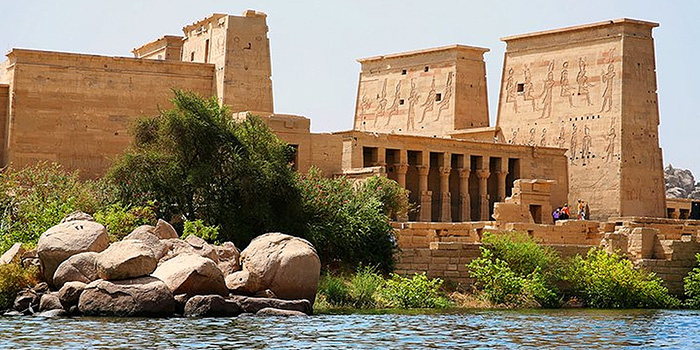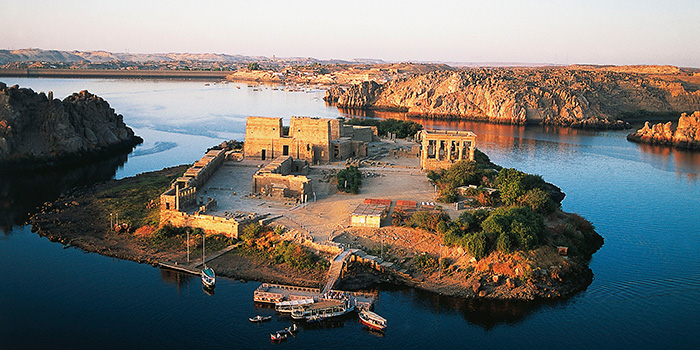
Egyptian mythology had a vast complex of gods more than any civilization in the ancient world. Egypt got hundreds of gods that used to be worshiped; one of the most important ones is the Egyptian goddess Isis. Her Egyptian name is Aset or Eset, and her name in the Greek form of an ancient Egyptian word for “throne.”
Isis is the goddess of fertility, the moon, of life and magic, she was one of the most powerful Egyptian gods, and she protected women and children and healed the sick. The myth says that she brought her husband Osiris back from the dead after their brother killed him. She was the sister of Osiris and then she became his wife, she gave birth to their son god Horus after she brought her husband back from the dead.

Isis was worshiped on a huge scale, from England to Afghanistan, as the myth says, but at first, there wasn’t any temple dedicated to her worship alone, or a town that is related to her. Philae temple was one of the first temples that were dedicated to the worship of the Egyptian goddess Isis; it is also named the temple of Isis. It was built with a coarse-grained intrusive igneous rock called Syenite; it has a similar general composition to that of the granite.
The temple name in Greek is Philae and in ancient Egyptian is Pilak, meaning “the end” referring to the southernmost limit in Egypt. It was built starting from 280 BCE by Ptolemy II and then added to it over the years by the Roman Emperors.
Philae temple was initially situated south of Aswan governorate, it strictly belonged to Nubia, and it was located near the expansive first cataract of the Nile in Upper Egypt. After building Aswan High Dam, the temple of Isis has to be relocated as other Egyptian temples, to save it from being submerged by the river.

Philae temple was moved in the 1970s from its original location to a higher Island nearby named Agilkia Island. The Island was leveled to resemble the original Philae, and then the temple was moved stone by stone and rebuilt on its new location. Agilkia Island was a little bit smaller, so they had to change the axe of the building while removing the temple. It was a very complicated process that took about ten years to accomplish until it was formally reopened in 1980, restoring its original beauty.
Philae temple is just about 7 km away from Aswan Airport; it won’t take much time to reach, so no need to worry. The new location of the temple of Isis on Agilkia Island is not hard to reach, all you need is a motorboat, which is easily accessible, and you’ll be there. It is actually a lovely experience; you’ll even have fun on the way if you’re lucky you’ll find a Nubian band on the boat singing and dancing representing their folklore, to entertain you.
If you are interested in Egyptian mythology and the Egyptian gods, then the Temple of Hathor is another temple to visit. Goddess Hathor was actually associated with Isis; there is too much in common between both of them. Hathor is the goddess of music, love & life; she is also Horus's Wife or the step-daughter of Isis. Hathor temple is one of the most preserved temples; it is located in Dendara in Qena Governorate. The most interesting part about this temple beside the cool blue ceiling is the secret passage under the temple; it’s definitely an adventure passing through the tiny passage.
You know that there are famous video games that use the ancient Egyptian temples in the game, like Assassin’s Creed, who displayed the secret passage under the temple of Hathor, and Isis smite build that uses Isis as the main character of the game, interesting right?
A Nile River cruise in Egypt is a journey through time, allowing you to explore this historic
The History of Ancient Egyptian Mummies is a captivating tale that weaves together the mysteries
Egypt is known for its rich history & amazing ancient wonders, but it also brags an incredible
Egypt, with its rich history, ancient wonders, and breathtaking landscapes, offers an unparalleled
Egypt, a land shrouded in mystique and grandeur, has a rich and captivating history spanning